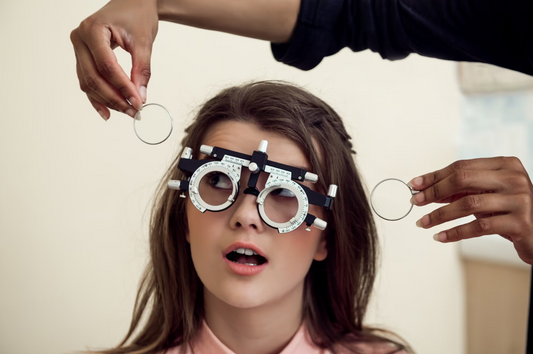Are you tired of switching between your regular glasses and sunglasses every time you step outside? Do you struggle with finding the right pair of sunglasses for different lighting conditions? If so, you may want to consider investing in a pair of photochromic sunglasses. In this article, we will explore what photochromic sunglasses are, how they work, and why they may be a great option for you.
What are Photochromic Sunglasses?
Photochromic sunglasses, also known as transition lenses, are eyewear that darkens or lightens depending on the level of UV radiation present. They are designed to provide protection against the harmful effects of the sun's rays while also offering clear vision in different lighting conditions. Photochromic sunglasses are available in both prescription and non-prescription options.
How Do Photochromic Sunglasses Work?
Photochromic sunglasses contain special lenses that are made with photochromic molecules. These molecules are activated by UV radiation, causing them to darken and absorb the light. When the UV radiation decreases, the molecules become inactive, and the lenses return to their clear state. This process is automatic and happens quickly, usually within a few minutes.

Benefits of Photochromic Sunglasses
There are many benefits to wearing photochromic sunglasses, including:
Convenience
One of the main advantages of photochromic sunglasses is their convenience. They eliminate the need to switch between different pairs of glasses, making them ideal for people who are always on the go.
Protection
Photochromic sunglasses provide protection against the harmful effects of UV radiation, including cataracts, macular degeneration, and skin cancer. They also reduce glare, making it easier to see in bright sunlight.
Clarity
Photochromic sunglasses offer clear vision in different lighting conditions, eliminating the need to squint or strain your eyes. They also reduce eye fatigue, making them ideal for people who spend a lot of time outdoors.
Different Types of Photochromic Sunglasses
There are several types of photochromic sunglasses available, including:
Glass Lenses
Glass lenses are the traditional material used for photochromic sunglasses. They are scratch-resistant and provide excellent clarity, but they are also heavier and more fragile than other materials.
Polycarbonate Lenses
Polycarbonate lenses are lighter and more impact-resistant than glass lenses, making them a popular choice for photochromic sunglasses. They are also less expensive than glass lenses.
High-Index Lenses
High-index lenses are thinner and lighter than traditional lenses, making them a great option for people with high prescriptions. They also provide excellent clarity and are available in photochromic options.
Factors to Consider When Choosing Photochromic Sunglasses
When choosing photochromic sunglasses, there are several factors to consider, including:
Color
Photochromic lenses come in different colors, ranging from brown and gray to yellow and green. The color you choose will depend on your personal preference and the activities you plan to do while wearing them.
Darkness
Photochromic lenses can vary in darkness, with some lenses becoming very dark in bright sunlight and others only slightly tinted. The darkness you choose will depend on your sensitivity to light and the activities you plan to do while wearing them.
Brand
There are many brands of photochromic sunglasses available, each with their own unique features and benefits. It is important to do your research and choose a reputable brand that meets your needs and budget.
Tips for Taking Care of Photochromic Sunglasses
To ensure your photochromic sunglasses last as long as possible, it is important to take proper care of them. Here are some tips:
- Clean your lenses regularly with a microfiber cloth and lens cleaner.
- Store your sunglasses in a protective case when not in use.
- Avoid leaving your sunglasses in hot or humid environments, as this can damage the lenses.
- Avoid using harsh chemicals or abrasive materials to clean your lenses.
Frequently Asked Questions
- Can photochromic sunglasses be used for driving?
- Yes, photochromic sunglasses can be used for driving, but it is important to ensure that the lenses provide clear vision in all lighting conditions.
- Do photochromic sunglasses work in cold temperatures?
- Yes, photochromic sunglasses work in cold temperatures, but they may take longer to transition between clear and dark states.
- Are photochromic sunglasses suitable for people with sensitive eyes?
- Yes, photochromic sunglasses are suitable for people with sensitive eyes, as they provide protection against UV radiation and reduce glare.
- Do photochromic sunglasses work indoors?
- No, photochromic sunglasses require UV radiation to activate the photochromic molecules, so they will not darken indoors.
- How long do photochromic sunglasses last?
- The lifespan of photochromic sunglasses depends on several factors, including the quality of the lenses and how well they are taken care of. On average, they can last up to two years.
Conclusion
In conclusion, photochromic sunglasses are a great option for anyone who wants the convenience of a single pair of glasses that works in different lighting conditions. They offer protection against UV radiation, reduce glare, and provide clear vision. When choosing photochromic sunglasses, it is important to consider factors such as color, darkness, and brand, as well as taking proper care of them to ensure they









